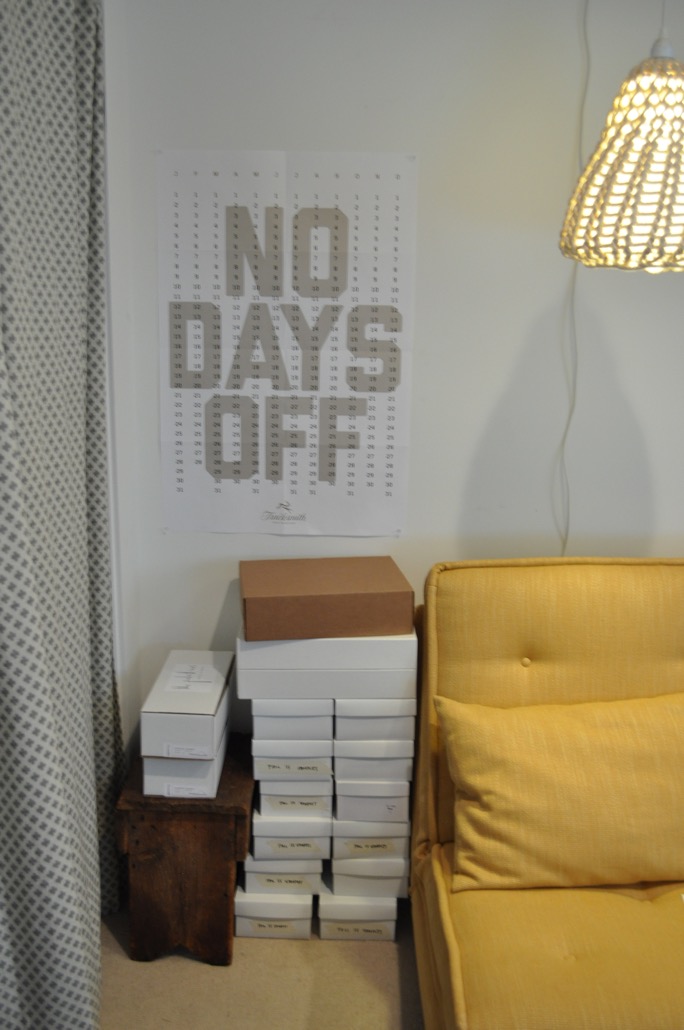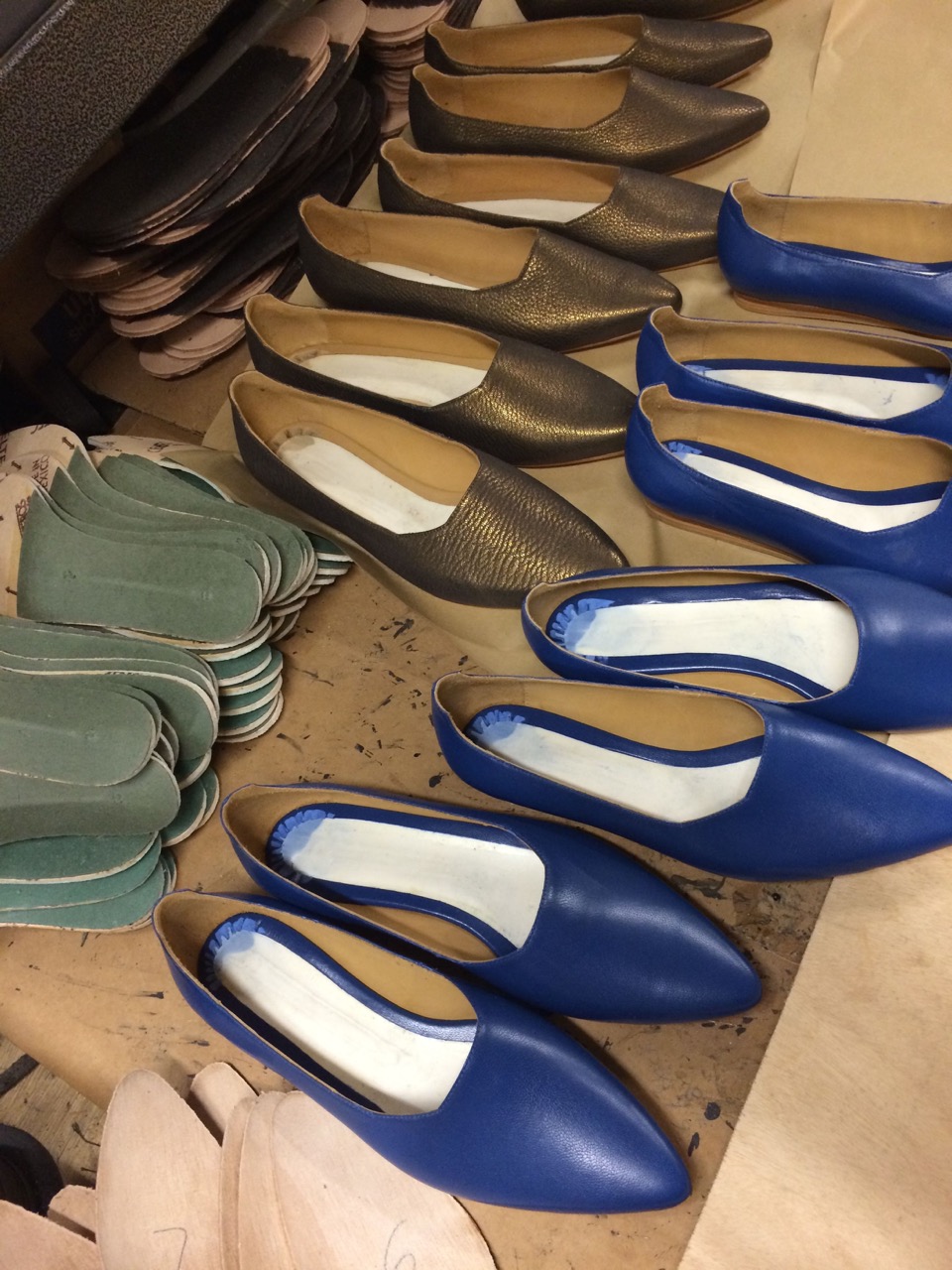Last month The Palatines teamed up with The MIA Project and Detroit based watch and leather company Shinola for a pop-up at Shinola's Silverlake store. I took the opportunity to go check out The Palatines fall collection and to meet the owner and designer Jessica Taft Langdon. I had been eying her shoes online for quite some time but hadn't had the chance to admire them in person yet. The craftsmanship and design were stunning. Jessica possesses an incredible database of knowledge when it comes to footwear and her experience is clearly visible in her products. She has worked with a wide range of companies, including Alexander Wang, Proenza Schouler and Coach. But for The Palatines she has created a style that is uniquely her own. A perfect mix of retro influences and modern simplicity that come together to form timeless pieces. Timelessness is a wonderful attribute in a brand, especially when the quality of the construction is on par. Because who doesn't like to buy products that last.
It was a treat not only to get the chance to admire The Palatines shoes, but to speak with Jessica as well. She is warm, intelligent and clearly incredibly talented. This American made footwear designer really knows her stuff.
1. where did you grow up, are you a Los Angeles native?
I grew up in & around the Philadelphia area, and then lived in NYC for a few years before I moved to the Pacific Northwest for college. I thought I would stay in Portland, Oregon after undergrad, and started working in a shoe store. My lifelong appreciation of footwear found its place, and lead me to the realization that I wanted to be a designer… So I went back to NYC to attend FIT, and after a 4 month stint studying in Milan, I started working for different brands in NYC!
2. You have a strong background in fashion, working with more than a few big brands. How did you get your start?
Slowly, but surely, which seems to kind of be the way I do everything! As I said, I started working in retail. I certainly don’t think that ALL designers must work in retail, but for me it was really important. I still think a lot about the feedback and comments on fit and comfort that I heard every day from customers, and it does inform the kinds of styles and constructions that I use for the palatines.
I think the fact that I studied in Italy was one of the things that really opened doors for me, as an American designer. Learning the industry there is a very specific thing - it’s very traditional, but it’s also very very advanced in what they can do in shoe making. The factories in Italy are really streamlined & precise, and as a designer, you need to be able to keep that in mind, and design and communicate your ideas in a way that can be put into production. So, having strong training in those areas was certainly helpful.
3. Was footwear always the area that interested you most or did life just lead you in that direction?
Oh yeah, I’ve always been a big fan of shoes. I wasn’t a terribly huge fan of school when I was a kid, but going shopping for new school shoes was pretty much the highlight of my year. I used to drag my mom all over the mall, looking for the perfect pair.
4. What are some of your influences? Are there certain aspects that you like to focus on when designing a shoe?
My influences stylistically always come from counter culture, and usually it’s stuff that I thought was cool when I was in middle school and high school. You may not be able to see it in the final shoe, but it’s always there. For instance, my best selling style, the Caelum sandal has a layer of the sole covered by leather, sandwiched between the insole and the outsole of the shoe. This design detail came directly from the sneakers that club kids and ravers used to wear in the 90’s - in NYC, they’d take their Converses to a shoe repair shop on St Marks Street, and have the guys there build huge sandwiched platforms, usually in contrasting striped colors. So, my little “sandwich” is a subtle homage to those shoes.
Generally, I want each of the style to be pretty identifiable - it’s a Mary Jane, or a Pump, so that it’s not intimidating. It’s fashion, but it’s not too crazy. Then I just like to mess with that classic style somehow - give it something that I haven’t seen before. Sometimes that little twist is more dramatic than others, but it’s there in pretty much every style.
5. Can you talk a little about your decision to manufacture in Los Angeles and what that process was like?
I originally started thinking about manufacturing domestically when I was still living and working in NYC. I had been working with Chinese factories for a long time, and had realized that as the economy strengthened in that country, it was growing harder and harder to find quality factories to work with. It was right around the time that the recession had started here in this country, and President Obama was talking a lot about strengthening our manufacturing sector. I thought about whether we could be making shoes here in the States, and did some research to find existing factories on the East Coast, and there wasn’t a single one.
By happenstance, life facilitated a move for my husband and I to Los Angeles. When I arrived, I started to hear rumors that there were still small factories in the area, and I decided to go introduce myself to some of the owners. It took them a bit of time to realize that I knew what I was talking about, and that I understood what actually went into shoe-making. From there, I started trying some styles in a few different factories, and found one that had the right hand (by which I mean that the construction and finishing techniques were what I wanted). We started making samples for The Palatines slowly, and I’m still working with the same small factory today.
6. What is your relationship like with your manufacturer and how does that influence your design?
As I said, when I first started introducing myself, I’m not sure the factory owners really knew what to expect from me. I really did have to prove to them that I understood their craft. Although there’s a great footwear design degree program in Los Angeles, there really aren’t all that many designers working here who are familiar with manufacturing, which is really important, if you’re going to work with small factories. I source most of the materials for the shoes myself - so I need to intimately understand how each one will be used, in order to make sure I’m bringing them the right materials to work with. There was a lot of trial and error in this regard, at the beginning. It still happens from time to time, since I am always challenging them with new things I want to incorporate in the shoes.
But, at this point, we really trust each other. When I first started bringing sketches of the styles I wanted to make, I had to explain a LOT of the pattern making and assembly techniques that I wanted. But now, I work very closely with the factory owner, and he knows what I like. I also trust him implicitly on issues of fit and comfort. We work very collaboratively in those areas, and it’s really become a terrific working relationship.
7. I Know you are currently working on your 2016 line and we can't wait to see what you have in store. Care to share a little about the upcoming collections or any future plans for The Palatines?
Sure! We’re just starting production on the Spring 16 collection, so I know exactly what that will be. There will be a LOT of new sandals to choose from, as well as a bunch of new colors of our staple slide sandal, the Caelum. I’m particularly happy about the way the palette for the Spring collection came together. I’d like to think that customers are getting to know the brand in part because of the use of color, which I think is really well represented in this collection.
Fall 16 is just starting to emerge into the world - I’m starting to select materials and work on samples of new styles. I’m pushing myself to design a Fall collection that is a bit riskier than the current offering. Expect to see some unusual material combinations, as well as a couple of new heel shapes! Further details to come….. I’m not even sure, myself where this collection is headed!
Shop the American made shoe line at www.thepalatinesshoes.com + follow Jessica Taft Langon @thepalatines
Photos courtesy of The Palatines.



















